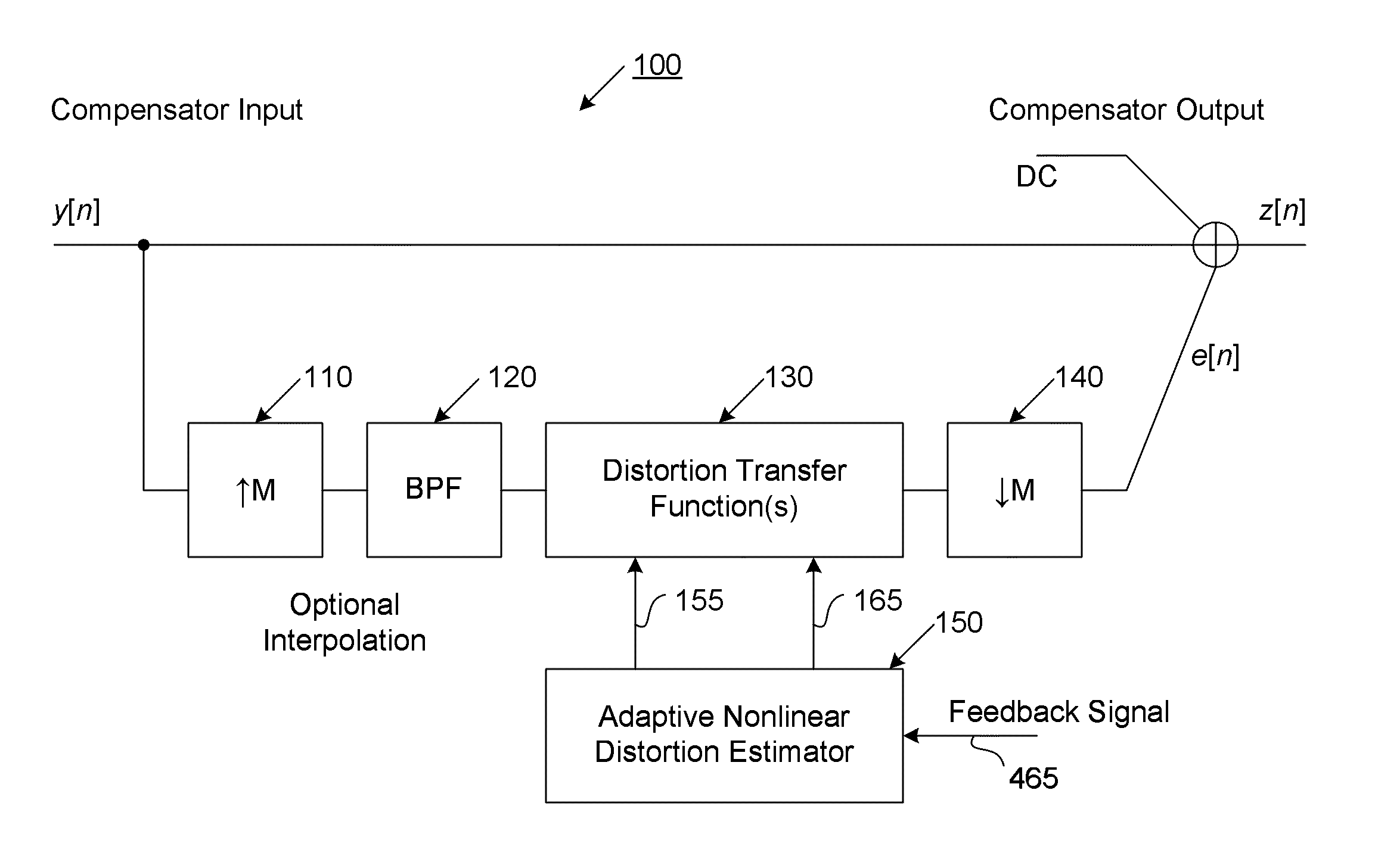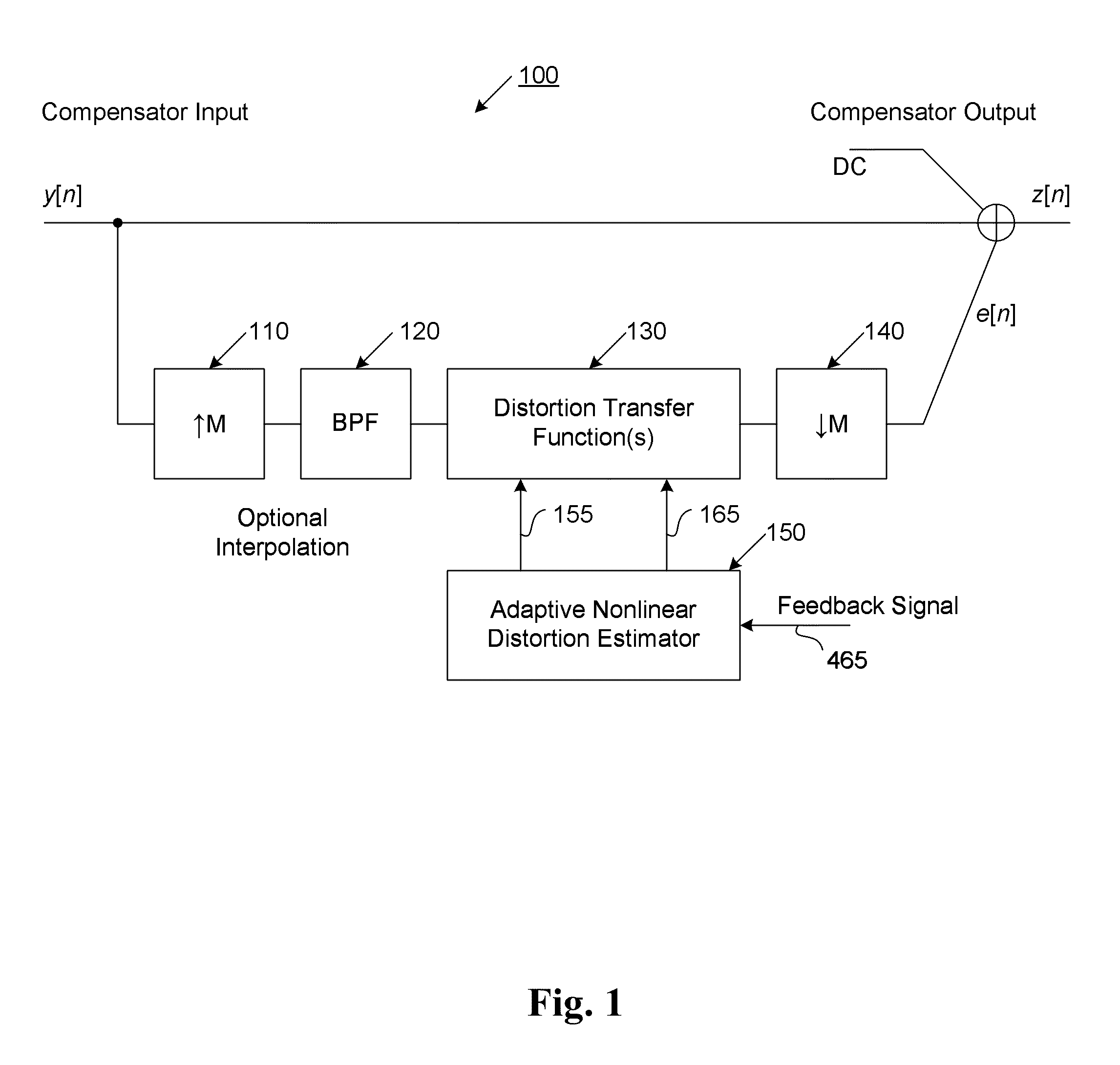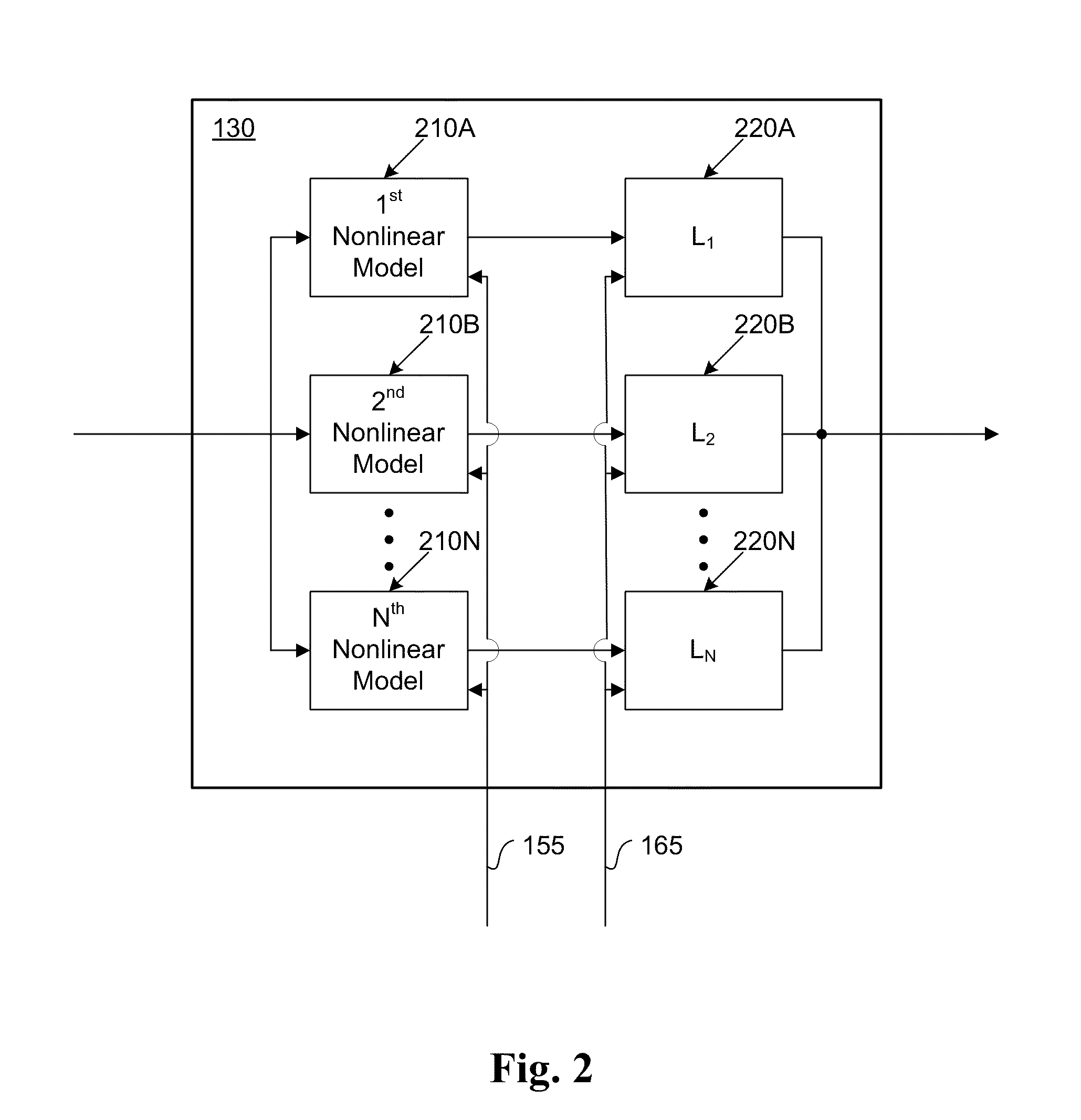Amplifier Linearizer
a linearizer and power amplifier technology, applied in the field of electrical components, can solve the problems of limiting the performance of state-of-the-art electronic systems, affecting the linear performance of amplifiers, so as to reduce nonlinear distortion in power amplifiers, wide instantaneous bandwidth, and cancel out errors
- Summary
- Abstract
- Description
- Claims
- Application Information
AI Technical Summary
Benefits of technology
Problems solved by technology
Method used
Image
Examples
Embodiment Construction
Further features and advantages of the invention, as well as the structure and operation of various embodiments of the invention, are described in detail below with reference to the accompanying FIGS. 1-7, wherein like reference numerals refer to like elements. Although the present invention is described in the context of power amplifiers, one of ordinary skill in the art readily appreciates that the linearization techniques described herein are applicable to any type of electronic component where it is desired to accurately and adequately eliminate inherent non-linear errors.
In general, the predistortion linearization circuitry of the present invention implements, among other things, (1) a higher-order polynomial model of an amplifier's gain and phase characteristics—higher than a third-order polynomial model; (2) an adaptive calibration technique; and (3) a heuristic calibration technique. The higher-order polynomial model is generated by introducing, for example, a plurality of m...
PUM
 Login to View More
Login to View More Abstract
Description
Claims
Application Information
 Login to View More
Login to View More - R&D
- Intellectual Property
- Life Sciences
- Materials
- Tech Scout
- Unparalleled Data Quality
- Higher Quality Content
- 60% Fewer Hallucinations
Browse by: Latest US Patents, China's latest patents, Technical Efficacy Thesaurus, Application Domain, Technology Topic, Popular Technical Reports.
© 2025 PatSnap. All rights reserved.Legal|Privacy policy|Modern Slavery Act Transparency Statement|Sitemap|About US| Contact US: help@patsnap.com



